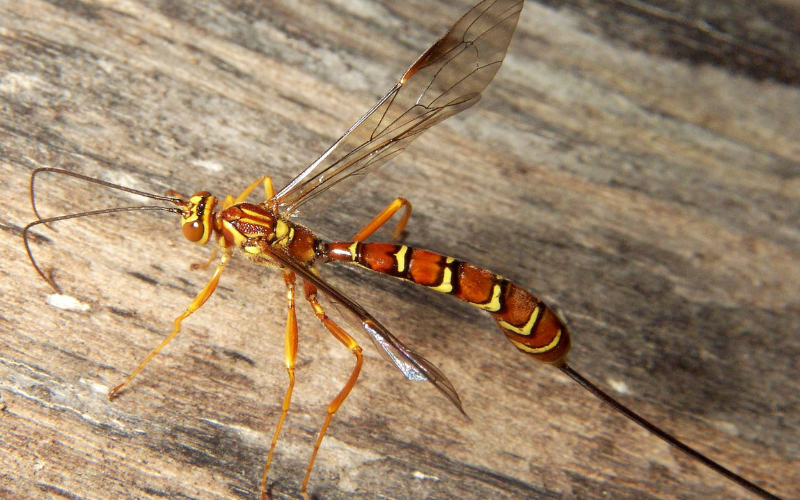Breaking all the Rules: Parasitoid Wasps Defy Expected Diversity Patterns

Nature is filled with many phenomena that follow predictable patterns. From survival of the fittest to optimal foraging behaviors, these patterns help biologists understand and predict how organisms interact with each other and their environment.
The latitudinal diversity gradient is one such phenomenon. Simply put, it means species diversity is expected to be highest along the equator and decrease as you move towards the poles. And while the vast majority of organisms tend to follow this gradient, a large group of wasps are contradicting this phenomenon in mysterious ways.
The Ichneumonoidea are a family of parasitoid wasps that lay their eggs on or inside other insects. As the eggs hatch and develop, they eventually kill the host, serving an important role in regulating insect populations that might otherwise disrupt agriculture and forestry.
Back in the 1970s, a number of studies showed that this group of wasps seemed to contradict the latitudinal diversity gradient. More specifically, there appeared to be a greater number of species found in some temperate regions than in tropical ones.
Since this discovery, many researchers have proposed different hypotheses to try and explain this unusual trend. However, a group of researchers in the Integrative Biology department recently questioned whether this anomaly truly existed in the first place.
PhD candidate Jessica Castellanos-Labarcena and Drs. Dirk Steinke and Sarah Adamowicz were unconvinced of the previous findings. They took a new approach to analyze the wasps’ latitudinal diversity gradient: examining the wasps’ genetic diversity, rather than their species diversity.
According to Castellanos-Labarcena, looking at the insect’s molecular, or genetic, data can provide more detailed information, yielding better insights into diversity patterns.
“Our hypothesis was that, by focusing on genetic diversity instead of more traditional measures of species diversity, we were going to see that the previous pattern described was wrong, and we would see higher diversity at the equator,” she explains.

To test their hypothesis, the research team used the largest genetic dataset currently available for this group – DNA “barcode” data from approximately 334,000 individual wasps collected from different locations around the world. The researchers then used computer models to map the wasps’ genetic diversity from the equator to the poles.
The results showed that the genetic diversity of Ichneumonoidea, both within and between species, follows the same unusual pattern as originally reported for species diversity in the 1970s – with diversity peaking at northern latitudes.
Interestingly, the researchers also found that seasonal temperature changes influence the wasps’ genetic diversity, with areas of greater temperature swings translating to greater diversity.
Although surprised by the findings, Castellanos-Labarcena is excited about the future impact this type of research approach can have in the field of biodiversity science.
“The real importance of the paper is the methodology and its novel approach … especially as it can be applied to all other insects. Using barcode data to explore genetic diversity opens many new doors to exploring and understanding diversity of the largest group of animals on Earth.”
Castellanos-Labarcena also highlights the conservation implications of this research, since genetic diversity has a large influence on how efficiently a species can adapt to a stressful or changing environment. Understanding how genetic diversity differs by latitude will have a large impact on how we can predict and protect the future of these wasps in a rapidly changing climate.
“Insects play a critical role in ecosystems. In agriculture, we have insects that contribute to the health of the soil, we have pollinators that help fertilize crops, and we have pests that damage those same crops. By controlling these pests, ichneumonid wasps play a very important functional role within the ecosystem. We need them.”
With the ichneumonid wasps’ unusual diversity gradient confirmed but still unexplained, the researchers suggest that further studies examining the impacts of species interactions, climate change, and geological events might help shed light on this ongoing mystery.
And in the meantime, Castellanos-Labarcena, Steinke, and Adamowicz’s study offers a new and innovative approach to studying diversity patterns of insects more broadly.
Read the full study in the journal of Animal Ecology.
Read about other CBS Research Highlights.